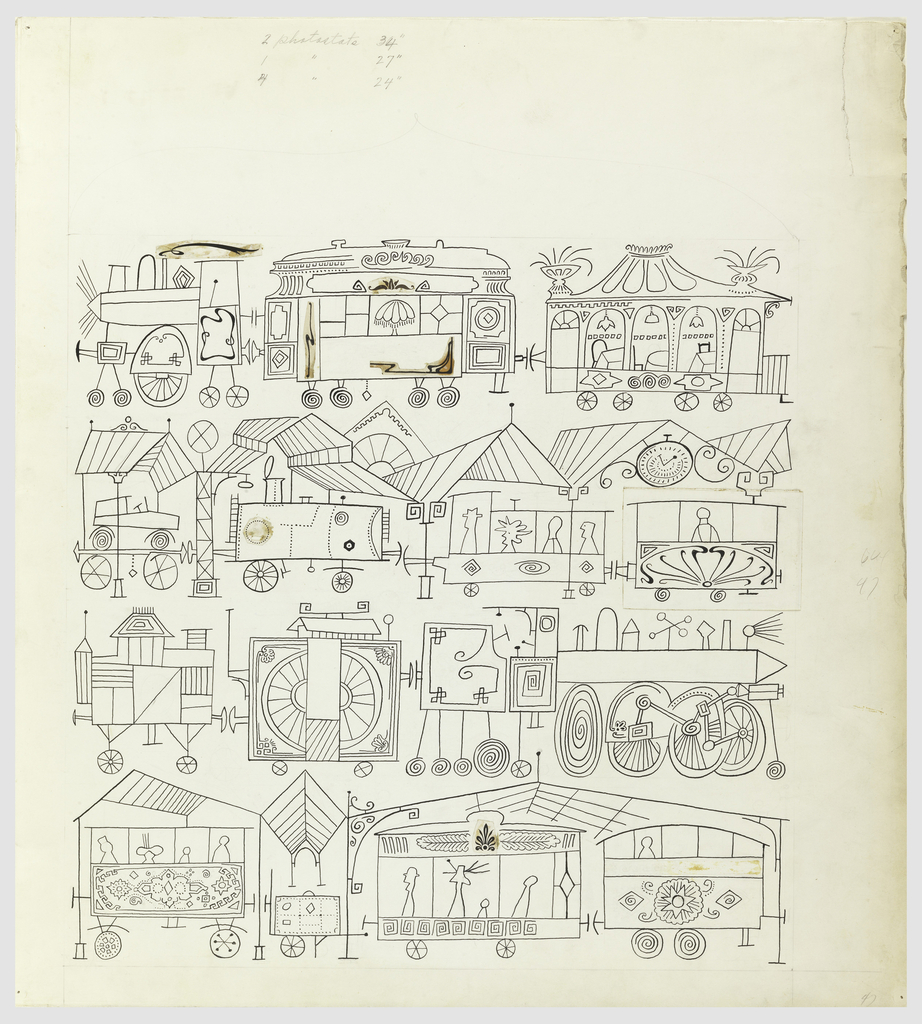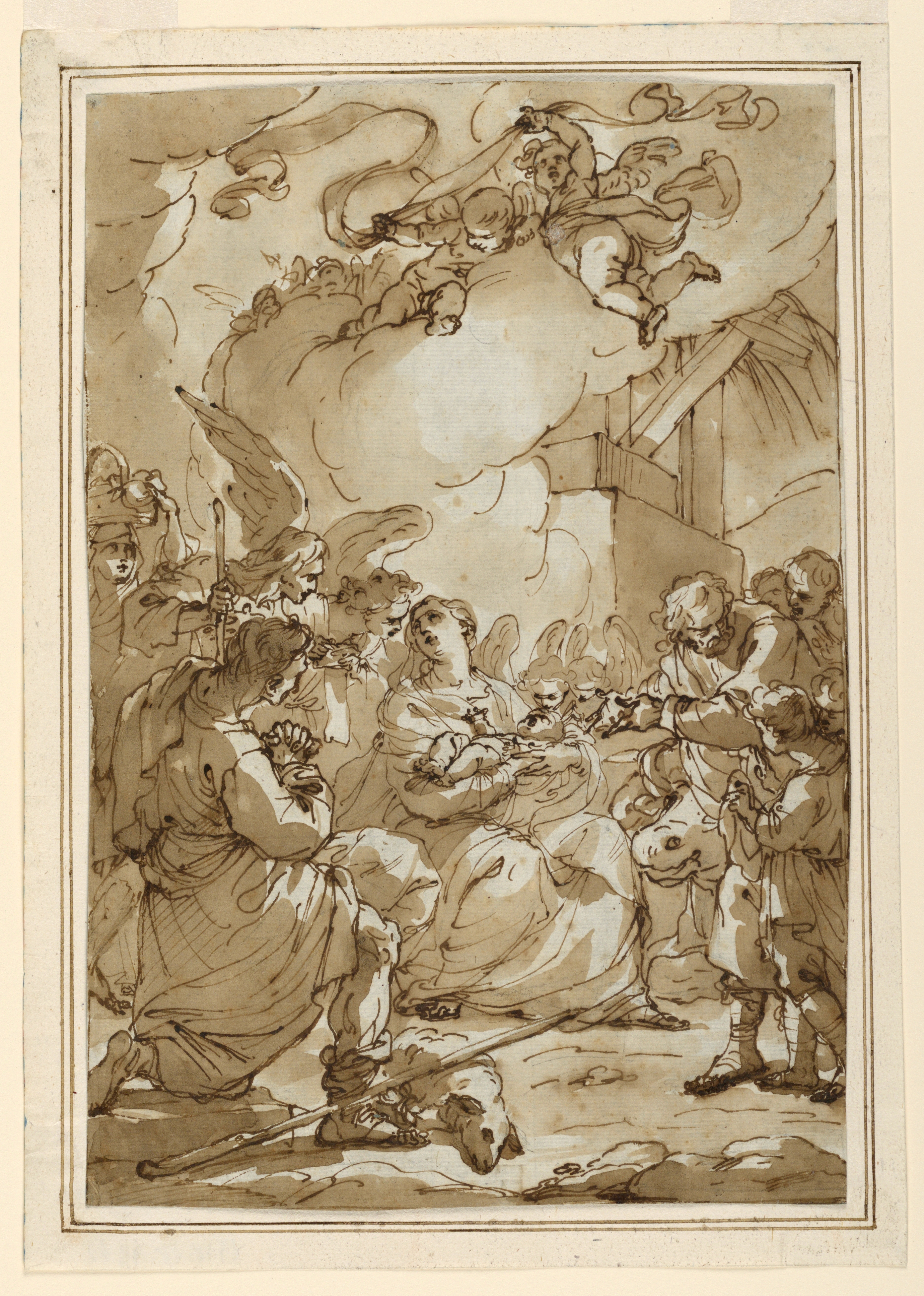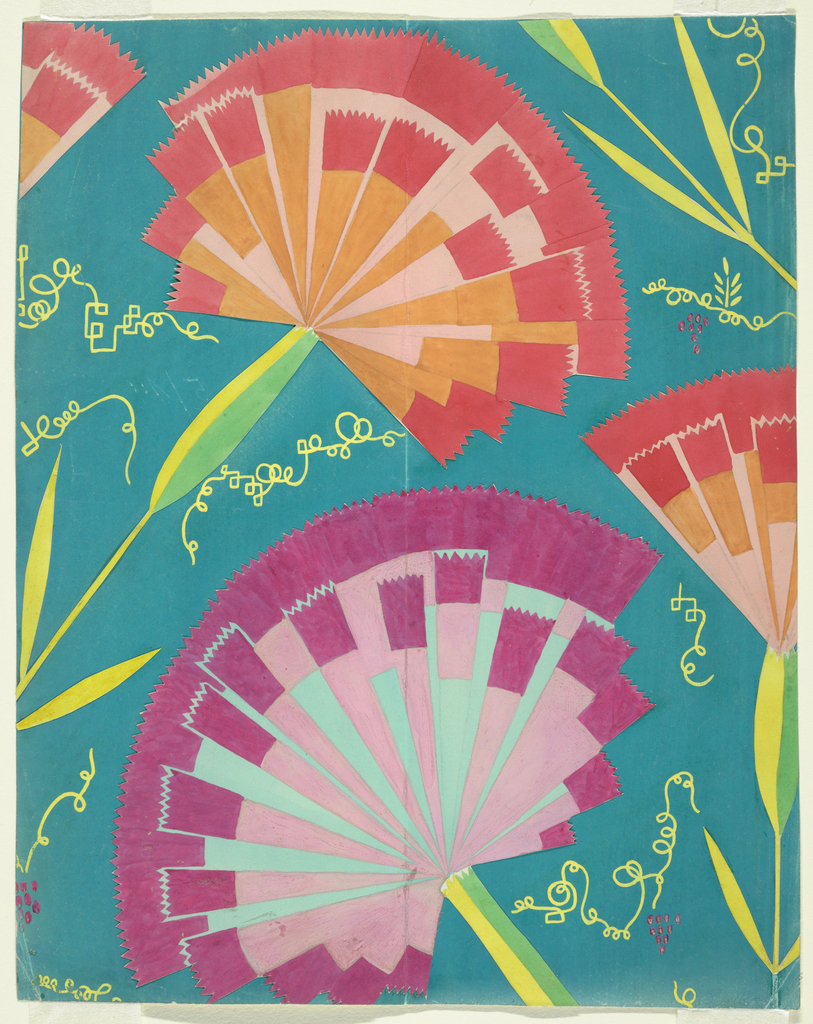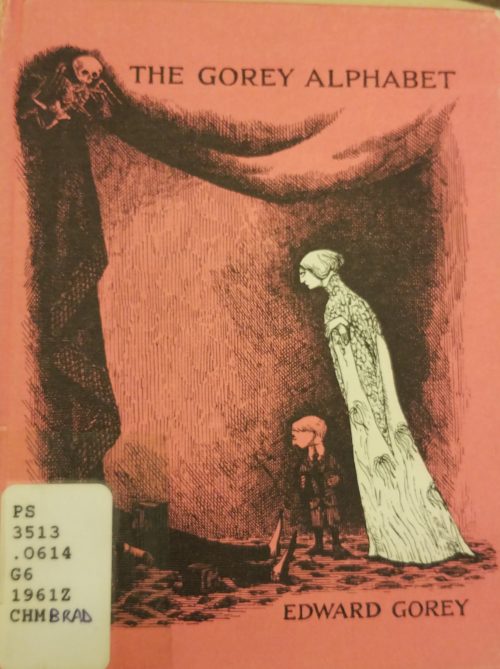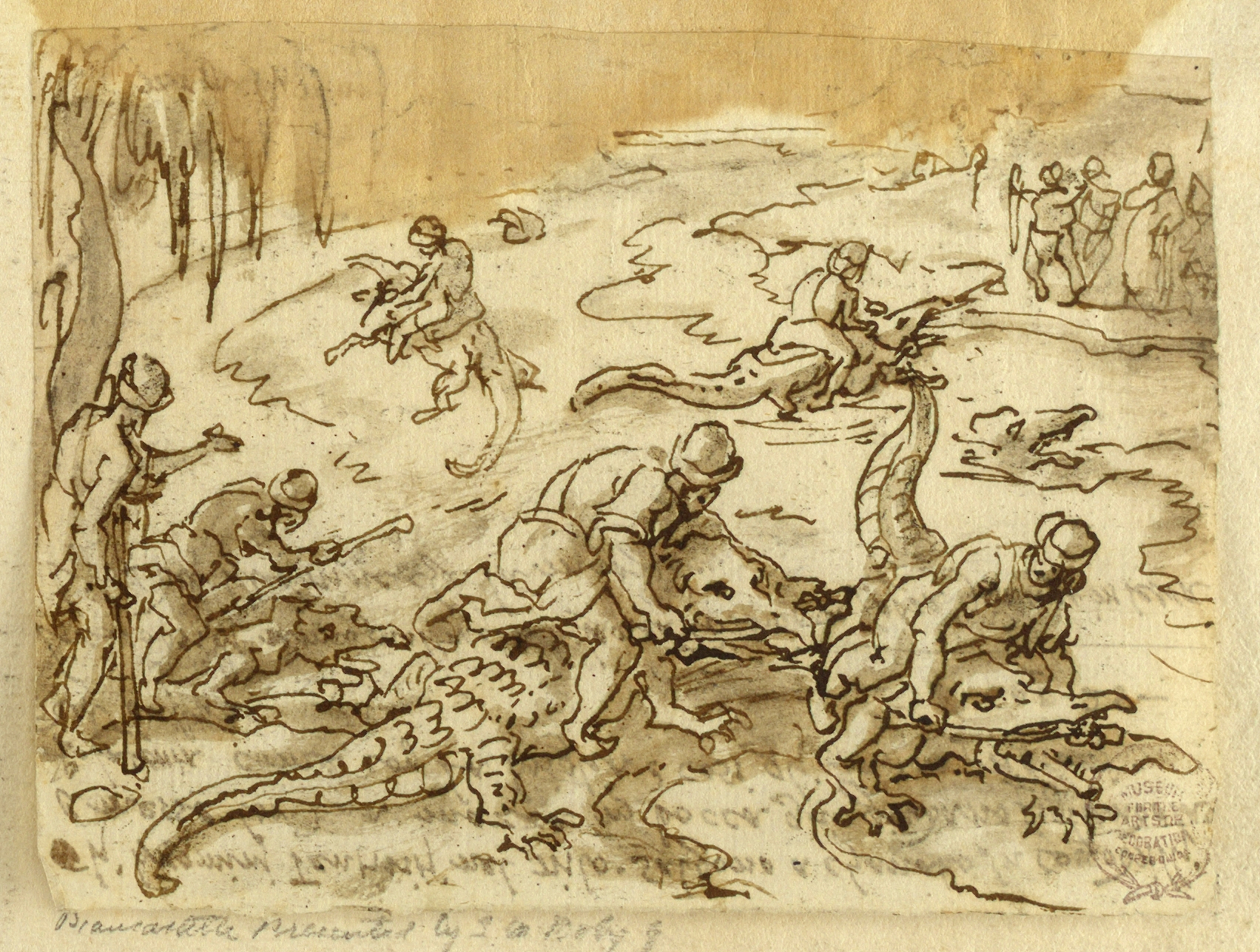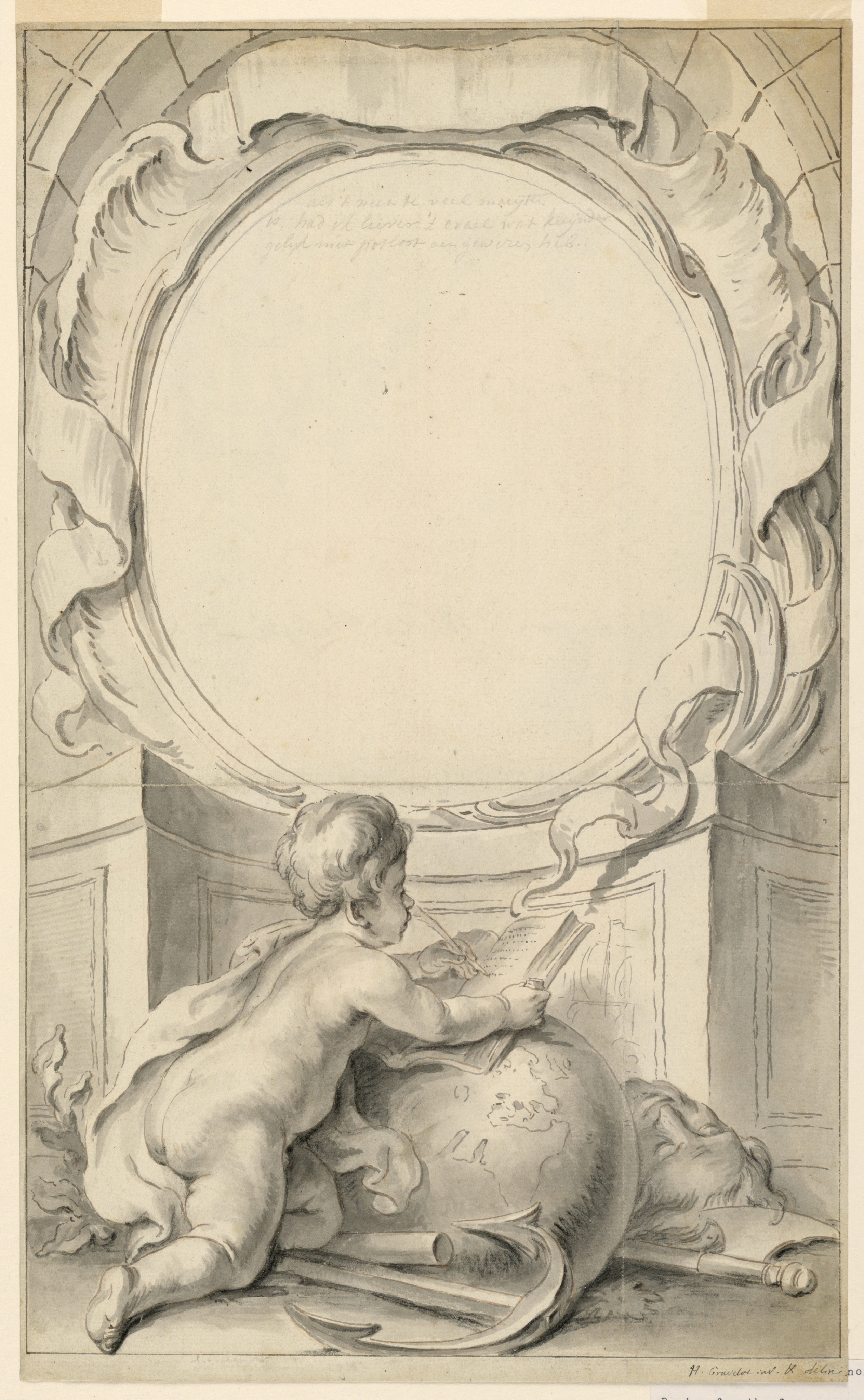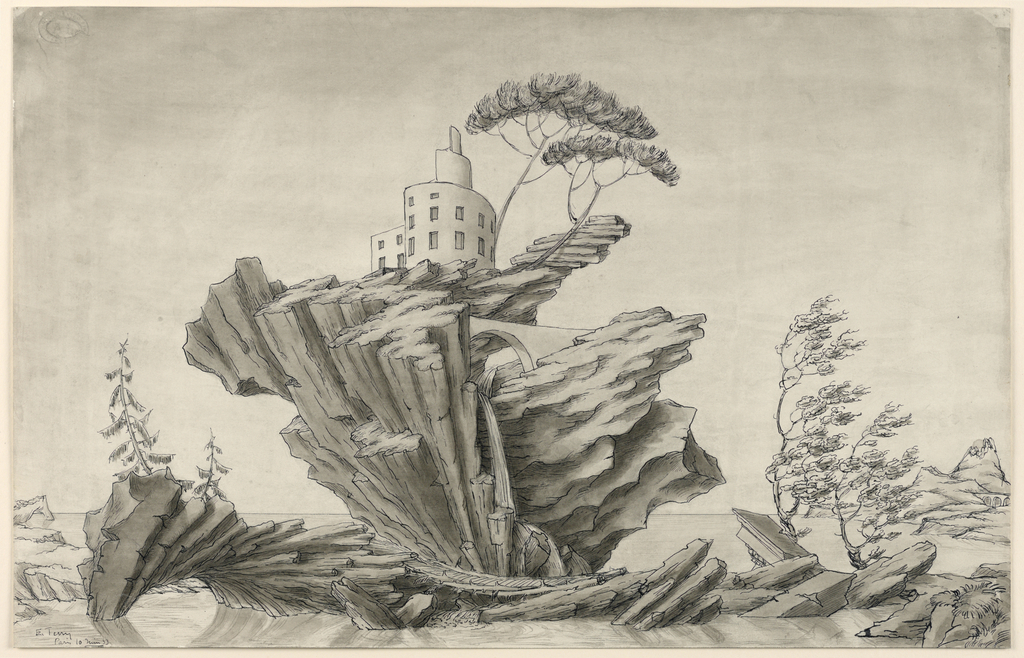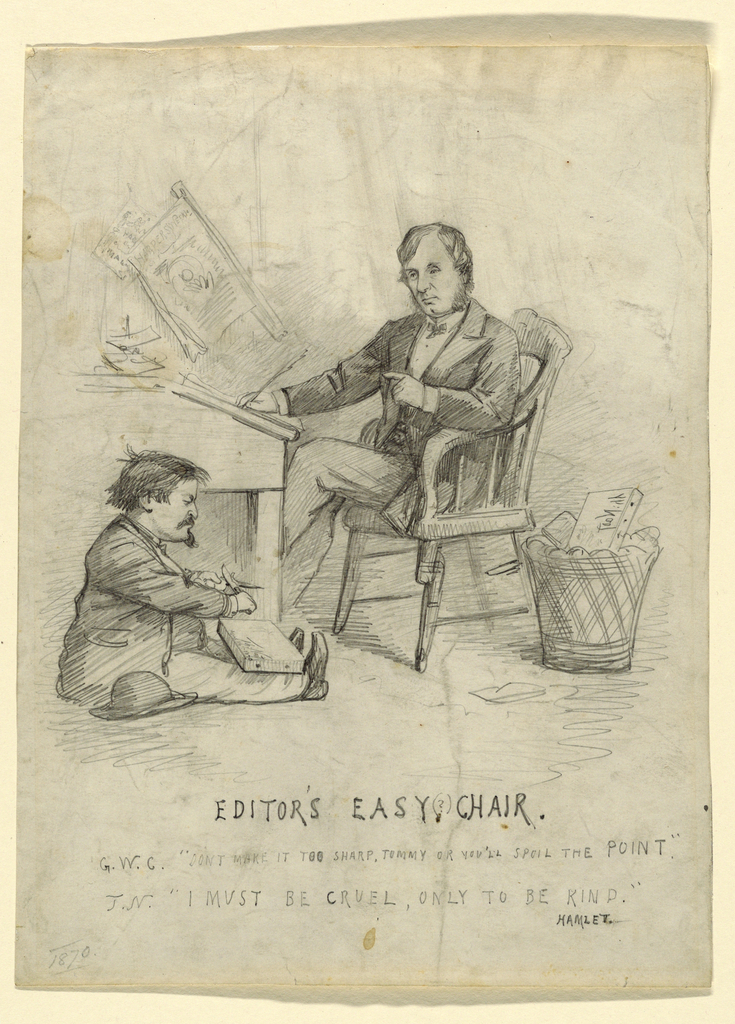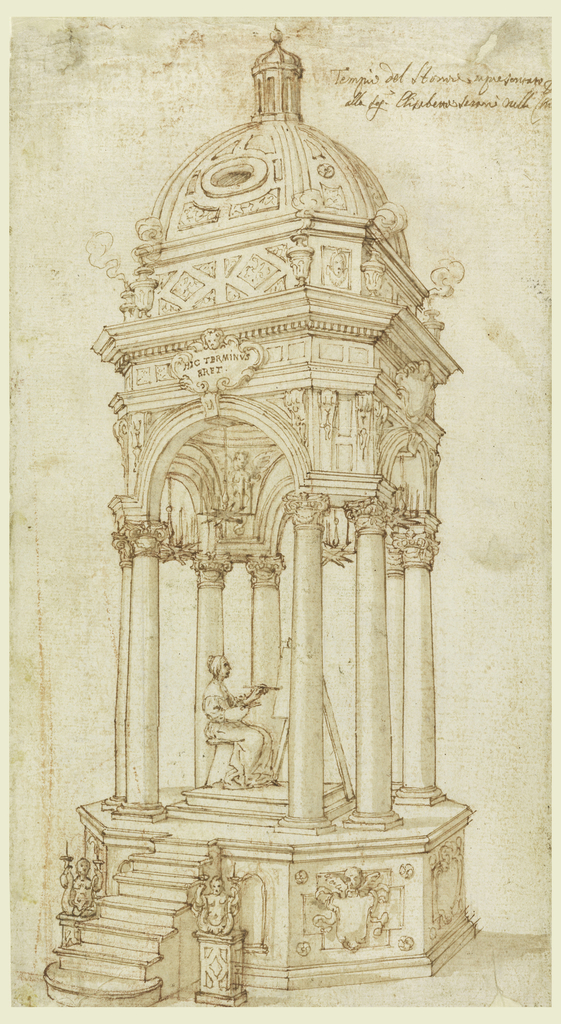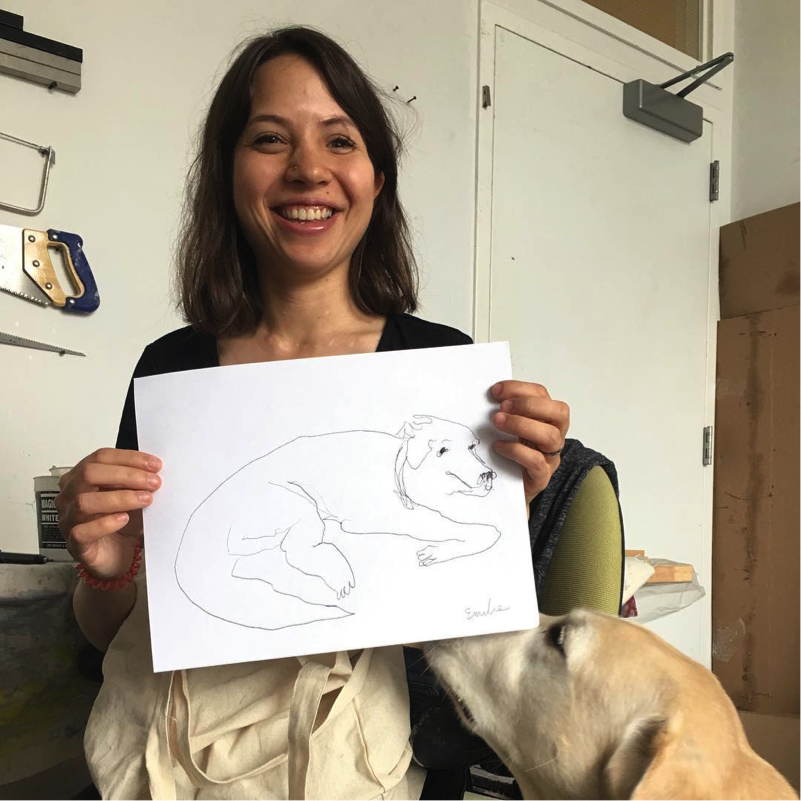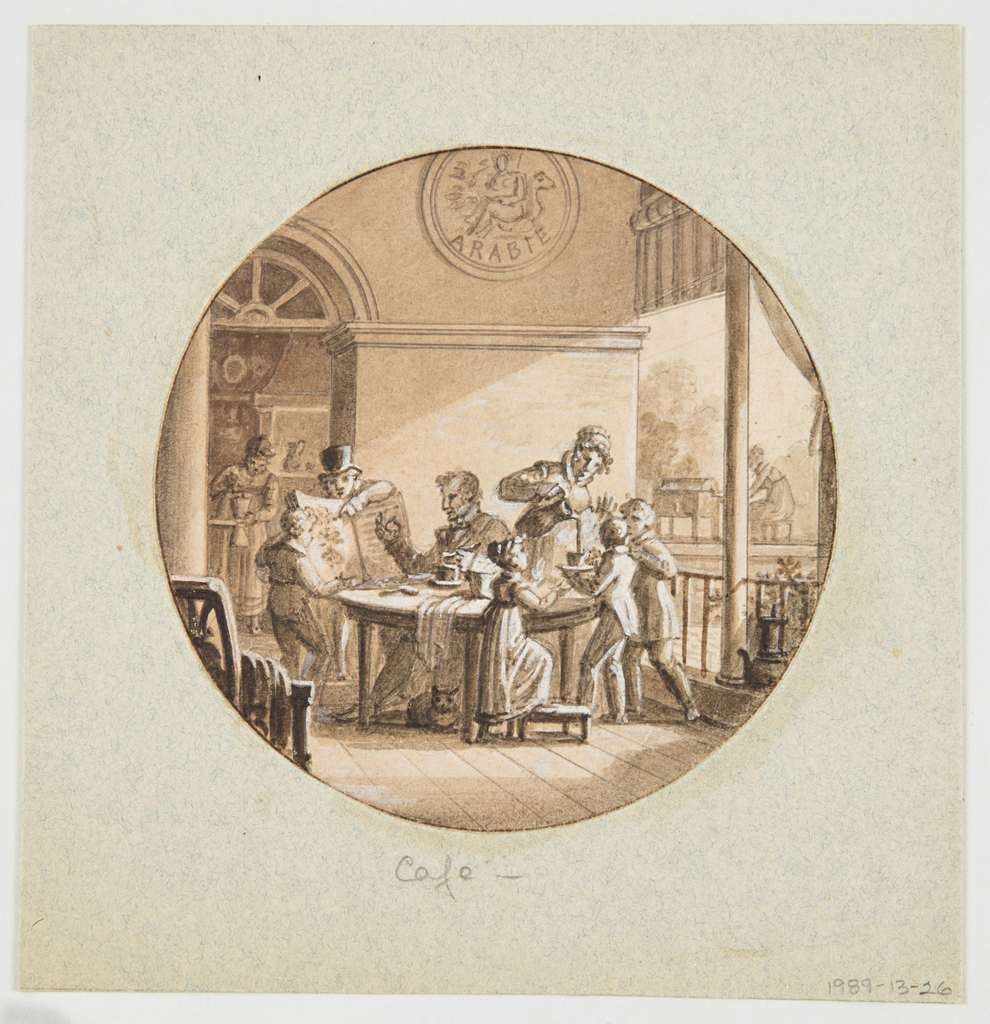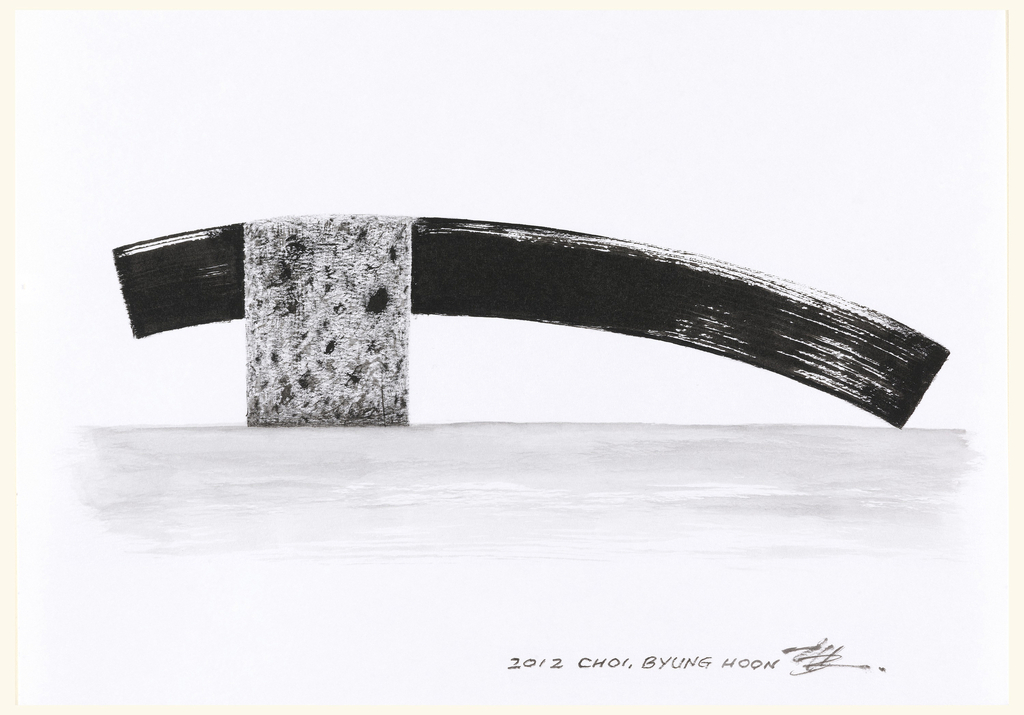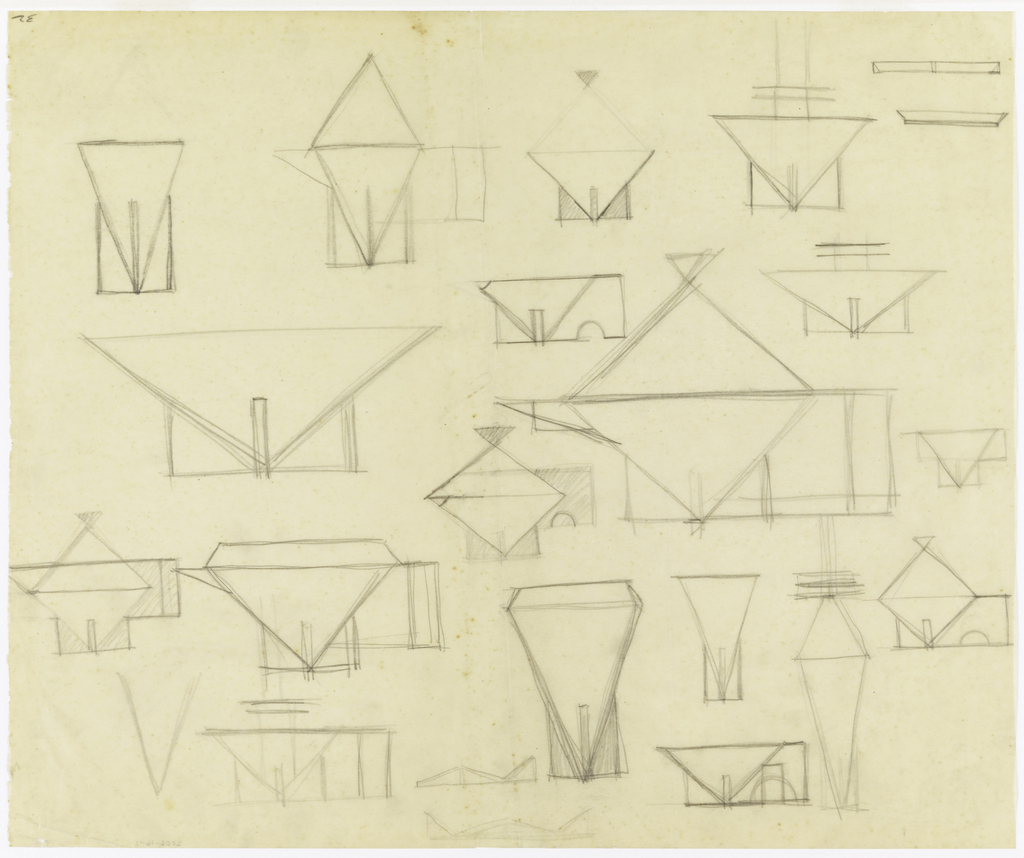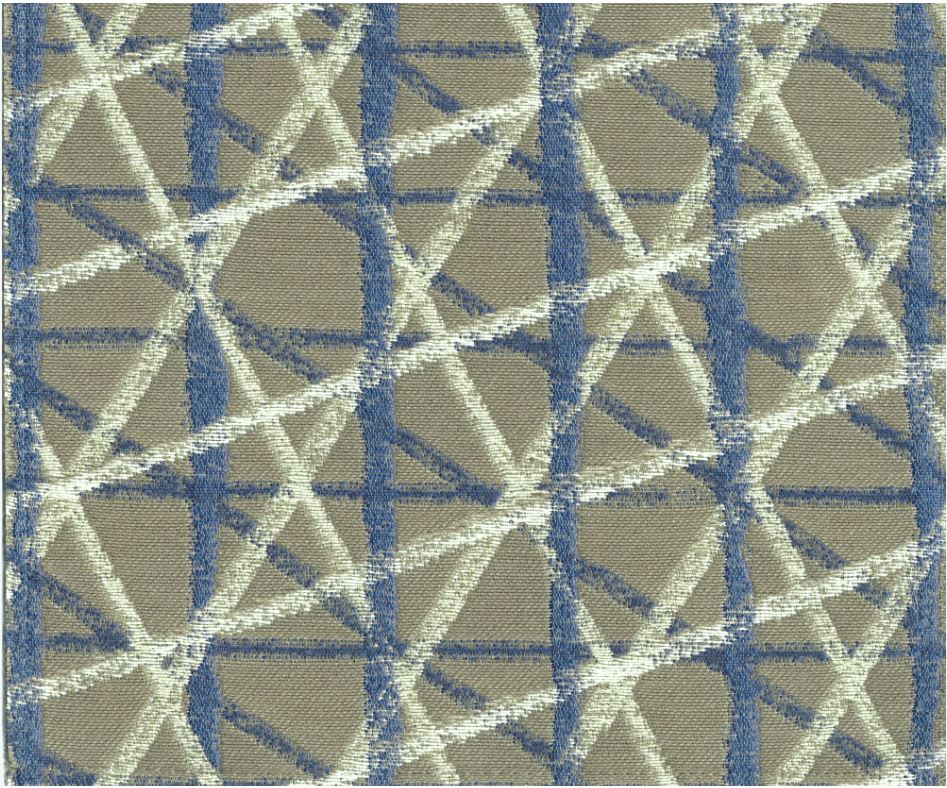Born in Romania in 1914, Saul Steinberg once described himself as “a writer who draws.”[1] Steinberg fled Europe in 1941, settling in New York City by 1942. While living in the United States, he traveled widely and observed the world around him in a highly whimsical style with an eye toward criticism and satire. Steinberg’s...
In the late fourteenth century, an elderly nun named Bridget experienced a mystical vision. Born in Sweden in 1303, Bridget (now St. Bridget) was nearly seventy when she made a pilgrimage to Bethlehem, and witnessed a holy sight. In her account of what transpired, St. Bridget describes a vision of the birth of Jesus in...
Author: Rachel Pool Purpurnelke (Purple Pink) is a textile design made from cut paper and gouache. It features entangled grapevines set amongst boldly-colored flowers that resemble Japanese fans, combined in a striking pattern indicative of non-Western influence. The designer Felice Rix-Ueno (Austrian, 1893–1967) created the blossoming flowers and their straight stems from cut paper; the...
In the spirit of Halloween, a fun and spooky object in our library collection is a copy of The Gorey Alphabet by Edward Gorey. Edward Gorey (1925-2000), American writer and artist, child prodigy and high achiever has nestled his way into the hearts of those fond of dark themes, Victorian and Edwardian settings, and pen-and-ink drawings. The...
In our most recent Short Story, we looked at the friendship between the Hewitt and Carnegie families, and how those relationships still shape Cooper Hewitt today. This month, a research mystery catches our eye. Recently, curatorial researcher Josephine Rodgers brought our attention to a lovely portrait of a woman given to the museum in 1931...
How to catch a crocodile? In this drawing, the Flemish artist Jan van der Straet, called Stradanus (1523–1605), shows us one particularly bold method. Hunters sit astride their prey, forcing long sticks between the crocodiles’ snapping jaws; companions armed with clubs wait nearby, ready to bludgeon the overpowered reptiles. The image isn’t based on first-hand...
In the mid-eighteenth century, the British historian Thomas Birch (1705 – 1766) published a series of short biographies of famous figures from his nation’s past. Accompanying each of the 108 biographies was an engraved portrait of the subject, whose likeness was presented within an elaborate decorative setting.[1] These ornamental frames were designed by Hubert-François Bourguignon...
Emilio Terry once described his creative work as “a dream come true,” an attitude reflected in his 1933 pen and ink sketch, Fantasy.[1] Although perhaps less familiar to modern audiences, Terry was one of the best-known designers of his time. Born to a wealthy family in Havana, Cuba, he later moved to France, where he lived and worked...
Today discussions concerning the divisive power of political rhetoric are being addressed throughout the national media. This drawing captures a pivotal moment in nineteenth-century American history that juxtaposes a similar debate. Thomas Nast (1840-1902) joined the staff of Harper’s Weekly in 1862 and his drawings of the Civil War established his reputation. George William Curtis...
On November 14, 1665, the Basilica of San Domenico in Bologna was crowded with mourners. They were gathered to remember a young female artist, Elisabetta Sirani (1638 – 1665), who had died suddenly the previous August.[1] Although only 27 at the time of her death, Elisabetta was already an acclaimed painter, draftsman, and printmaker—a contemporary...
Written by Steven Landau As a company of designers and producers of tactile maps and models, Touch Graphics, Inc. usually focuses on products that communicate spatial information through the sense of touch for use by visually impaired students and museum visitors. Occasionally, the company develops tools to support blind artists and scientists. One of our...
Café from the Service des Objets de Dessert, dated 1819-20, was drawn by Jean-Charles Develly as part of a table service for the Royal Sèvres Porcelain Manufactory. The factory was founded in Vincennes in 1740 and later relocated to Sèvres in 1756. In 1800, Alexandre Brongniart (1770–1847) was chosen as the administrator of the factory...
Elegant contrast is the defining characterstic of Korean sculptor, artist, and furniture designer Byung Hoon Choi’s body of work. This delicate black ink and gray wash drawing is no exception. The opposing forms, textures, and colors of the two geometries in this preparatory sketch for a bench produce a meditative composition echoed in Choi’s final...
Gail Davidson discusses modernist designer Ilonka Karasz's geometric iterations for tableware.
In tandem with her artistic practice, Sheila Hicks has been engaged with the fields of architecture, design, and textile industry for over 50 years. Sketching Air is Hick’s latest commercial collaboration. Working with Momentum Textiles, she has created a collection of five patterned weaves (Sketching Air, Mapping Ideas, Painting Strokes, Drawing Lines, and Crossing Colors)...
